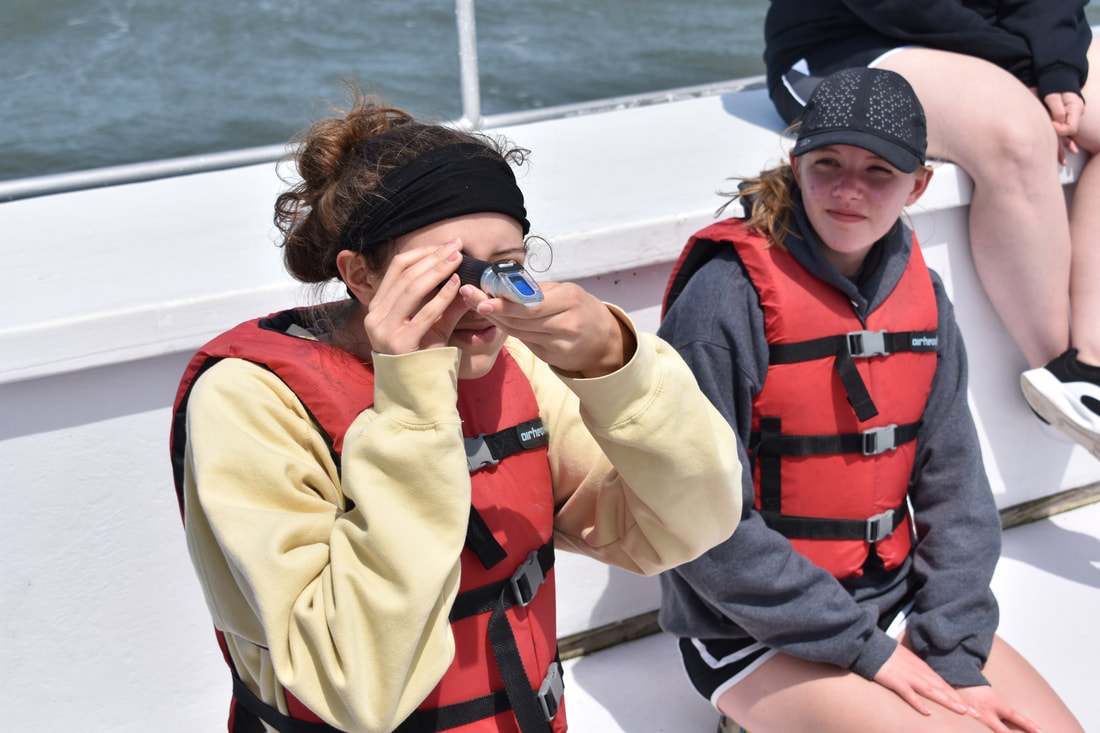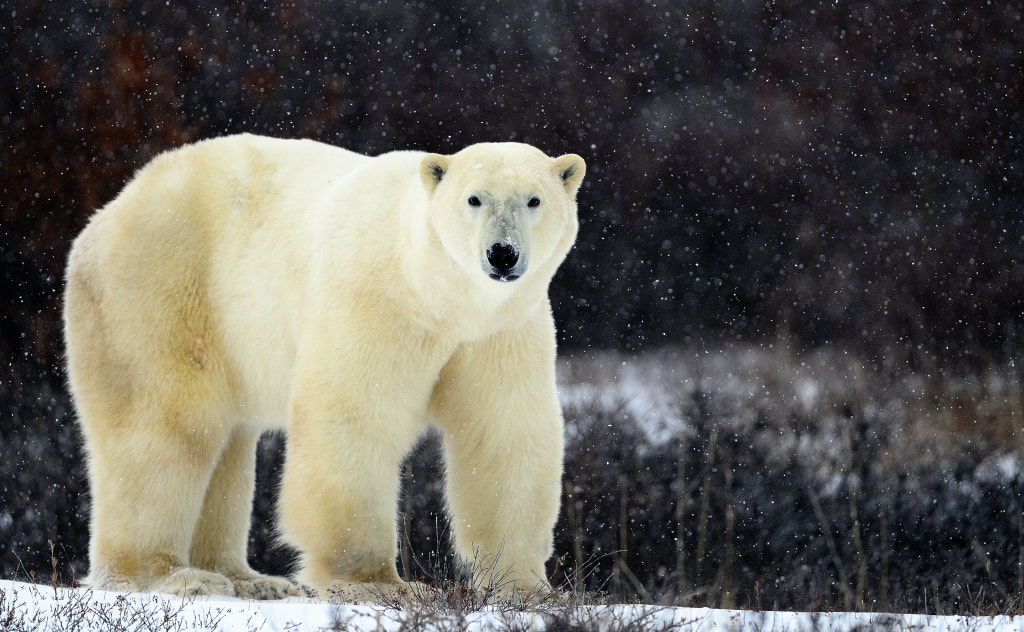|
Monday kicked off a busy week here at the field station. The first session of college courses began this week while school groups and Road Scholar continued their activities. Danville High School spent Monday afternoon checking the pH and salinity of the water. The group also learned how to trawl and tried their hand at trawling a couple of times. On Tuesday morning, Covenant Christian High School students went to Wallops Island to learn about dunes. The students practiced making their own dunes out of only the materials provided to them. They also combed the beach to find shells. The students went to the Maritime Forest on Wednesday morning to walk around and observe the different layers of the forest including the dirt and trees. Students from Owen J. Roberts High School spent Wednesday morning learning about invertebrates at Wallops Island. While there, they used sieves to filter through the sand in hopes of finding invertebrates. They also walked along the beach to find shells. Road Scholar participants kicked off Thursday morning with a kayaking trip through the Assateague Channel. During their morning paddle, they enjoyed the sights and saw wildlife including juvenile bald eagles and ponies. On Thursday afternoon, students from Strayer Middle School went to Tom’s Cove to observe the environment. While they were there, they used sieves to discover what animals they could find. Also, they used what educators Hannah and Paige called a “Godzilla line” to scare animals into a net. To end the week, students from Freedom Middle School spent Friday morning in the marsh examining characteristics of the marsh environment. They embraced the setting by diving into the mud and getting a full body experience of the marsh. Students in the Biological Oceanography class with Dr. Robert Vaillancourt from Millersville University took abiotic readings of the ocean on Friday afternoon.
0 Comments
There’s no better feeling than capturing that one precious moment in nature, when a bird takes flight, a bumble bee lands softly on a flower, or the setting sun reflecting perfectly on the surface of a mountain lake. Photographs are one of the best ways to relive your adventures and an excellent tool to teach others about the beautiful wildlife you’ve experienced. But when it comes to nature photography, capturing that perfect moment can be a challenge because there are so many moving parts, and wildlife can be especially unpredictable. We asked Chincoteague Bay Field Station’s expert nature photographer and Road Scholar instructor Jim Clark to provide us with a few simple tricks to elevate your photography and bring a piece of nature home with you: 1. Know Your Subject“Be a naturalist first, photographer second. I guarantee your images will be much more appreciated and welcomed by your audience,” explains Jim. “Oh yeah, you’ll have more fun, too!” The best way to photograph nature is to understand nature. Once you gain a deeper knowledge of your subjects, you’ll have an easier time capturing those defining moments about what makes nature so awesome. 2. Don’t Just Photograph Nature; Photograph to Be in NatureYou shouldn’t photograph nature just to get a pretty picture. Professional nature photographers enjoy being outside as much as they love capturing that perfect moment. For Jim, he loves how his students and Road Scholar participants have “just as much fun watching a great egret patiently wait for the right moment to strike the water to catch a fish as they did actually photographing it.” Nature photography should be about the experience and appreciating the beauty of the world, and then about you trying to photograph it. 3. Knowing When to Anticipate and When to ChaseThis one is a twofer. Knowing when to wait for just the right moment to capture can be hard, but it’s also very important. It involves plenty of patience and having a little know-how (see above tip) to anticipate how a moment might play out. Slow down, observe and wait to see if you can anticipate something incredible about to happen. Then be ready to chase the moment. Just as important as anticipating is knowing when to chase a moment. Once you see a moment beginning to unfold, get to work capturing the moment, like an osprey diving for a fish or two polar bears wrestling on the arctic tundra. Just remember: Jim says that knowing when to anticipate and when to chase aren’t mutually exclusive. Both depend upon each other to capture that perfect photograph. 4. Capture a Sense of Place“As nature photographers, we strive to seek that elusive characteristic in our landscape photography: a sense of place,” says Jim. “After all, it is the ‘it’ factor in landscape photography to have our viewers feel as if they can actually sense being there.” That’s why truly immersing yourself into the landscape you are photographing is so important in becoming a skilled and confident nature photographer. Let all distractions fade away and try to pinpoint what makes this landscape so uniquely beautiful. Engage all your senses – savor the experience. The more connection you have with the location, the better your photography will stand out and the more your viewers will feel that magic, too. 5. Get Eye to Eye with WildlifeThough your first inclination might be to remain standing to photograph a small animal, a guaranteed technique to improve your wildlife photography is to change your perspective. Look at your subject from a different angle and get low for an up close and personal view of the animal. “What makes a lower perspective appealing? The short answer: intimacy,” states Jim. “The viewer gets a sense of looking straight into the animal’s eyes and experiencing the world as the animal does.” 6. Listen“Newly minted nature photographers tend to focus on what they see, not what they hear. They fail to take advantage of the moment they are photographing when they don’t use all of their senses.” Jim explains that there’s two reasons for listening when photographing nature. The first is to help identify the species you want to photograph. Sometimes the sounds an animal makes will reveal what it is going to do next. The second, and more important, is that nature’s symphony provides an extra level of nature appreciation. Enjoy the experience! 7. Challenge YourselfOnce you’ve become skilled at the basics of photography, step outside your comfort zone and try something new. Try a new perspective or a different lens. Experiment photographing under different ambient lighting situations. Try a new Road Scholar photography program. “Make this the year you say to yourself, ‘Maybe it’s time…’ Then, fill in the rest of the sentence, and go for it,” Jim says. “Make this the year to increase your confidence, improve your skills, and raise your enjoyment in photographing nature.” A former North American Nature Photography Association President, Jim Clark is the nature photography instructor for the Chincoteague Bay Field Station, Wallops Island, Virginia. Jim leads anywhere between six to eight Road Scholar nature photography workshops at the station. Jim is also a columnist for Virginia Wildlife Magazine, former contributing editor for Outdoor Photographer magazine and author/photographer of six books. Visit Jim’s website at www.jimclarkphoto.com or like him on Facebook. For a full list of Jim’s Road Scholar programs, and more learning adventures, visit www.roadscholar.org.
Images © Jim Clark. All rights reserved. |
About
Everything you need to know about CBFS's educational programs, visiting Chincoteague Island, and more! Categories
All
Archives
January 2019
|
CHINCOTEAGUE BAY FIELD STATION | 34001 Mill Dam Road | Wallops Island, VA 23337 | (757) 824-5636 | [email protected]











 RSS Feed
RSS Feed

